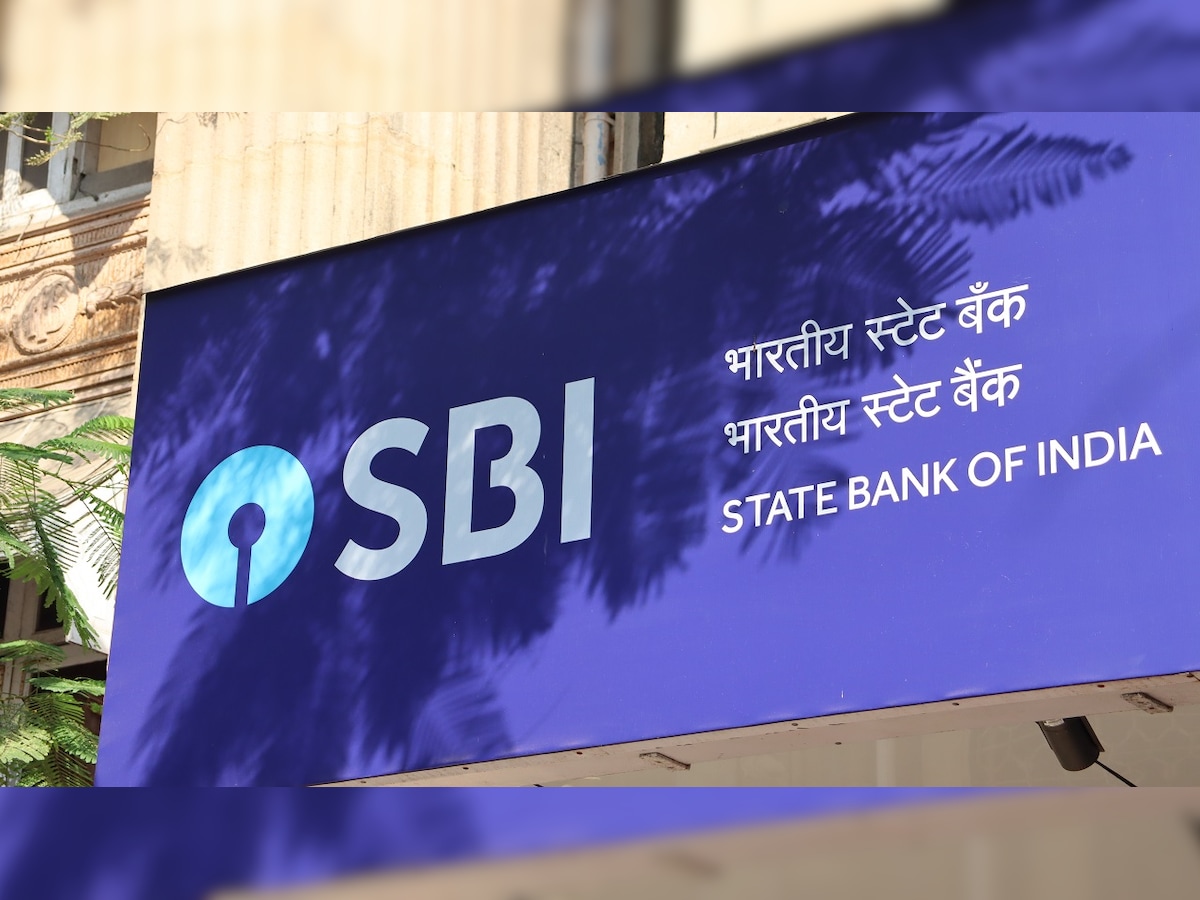SBI fund transfer to wrong account number: How to get your money back? Bank responds
Many times, people mistakenly send money to the wrong bank accounts. But what to do if that happens? Here’s what SBI suggests

SBI fund transfer to wrong account number: How to get your money back? Bank responds:
A situation where money has been mistakenly transferred to the wrong bank account can be stressful. In this case, the SBI customer immediately contacted the State Bank of India through its official Twitter account to seek assistance. Following the appropriate channels and communicating with the bank is essential to resolve such issues effectively.

By tagging the official SBI Twitter account, the customer ensured that their concern would be brought to the attention of the bank’s customer support team. Social media platforms often serve as a convenient and accessible means of communication for customers to address their concerns directly with the bank.
In their tweet, the customer mentioned that they had already provided all the necessary details to their branch, as instructed by the helpline. This demonstrates the customer’s proactive approach in providing the required information to initiate the process of reversing the transaction.
It is not uncommon for banks to require some time to investigate and resolve such matters. Reversing a mistaken transaction involves coordination between multiple parties, including the sender’s bank and the recipient’s bank, and possibly involving legal procedures. Therefore, the customer needs to exercise patience while the bank investigates the issue and works towards a resolution.
In response to the customer’s tweet, it is expected that the official SBI Twitter account will acknowledge the concern and provide guidance on the next steps. They may request additional details or direct the customer to the appropriate department within the bank to expedite the resolution process.
Customers must maintain regular communication with their bank during this period, promptly providing all necessary information and documentation. Following up with the branch in person or contacting the bank’s customer support helpline can help expedite the resolution process.

In such situations, customers need to remember that banks have established procedures to address such issues and are committed to resolving them. While the process may take some time, banks generally prioritize customer satisfaction and work towards rectifying any mistakes or errors promptly.
As a general rule, individuals should double-check and verify the accuracy of the recipient’s account details before initiating any financial transactions. Taking precautions can help minimize such errors and avoid the inconvenience associated with rectifying them.
In response to the customer’s query regarding the mistaken payment, the official SBI Twitter handle assured them that in cases where the wrong beneficiary has been mentioned, the home branch will initiate follow-up processes with the relevant bank(s) involved. Importantly, they also noted that there would be no penalty for this error.
This response from the SBI’s official Twitter handle assures the customer that the bank acknowledges their concern and is committed to resolving the issue. By stating that the home branch will take the necessary steps to rectify the mistake, it indicates that the bank understands the importance of addressing such cases promptly and efficiently.
Initiating follow-up processes with the other bank(s) involved demonstrates that SBI is actively working towards recovering the funds and rectifying the transaction. These processes typically involve communication and coordination between the customer’s home branch and the beneficiary’s bank to retrieve the funds transferred to the wrong account.
Furthermore, the assurance that no penalty will be imposed in such situations alleviates any additional concerns the customer may have had regarding financial consequences. This reassurance aligns with industry practices where banks recognize that genuine errors can occur and focus on resolving them in a customer-friendly manner.
It is important for the customer to maintain communication with their home branch and provide any necessary assistance or information required to facilitate the resolution process. This may include submitting transaction details, proof of the mistaken transfer, and any other relevant documentation requested by the bank.
By addressing the customer’s concern on a public platform like Twitter, SBI demonstrates its commitment to customer service and responsiveness. This public acknowledgement also serves to assure other customers that the bank takes such issues seriously and is dedicated to resolving them.
Customers who find themselves in a similar situation should take prompt action by contacting their home branch or the bank’s customer support channels. Providing accurate and detailed information about the transaction, including transaction IDs and beneficiary details, will help expedite the resolution process.
It is important to note that each bank may have specific procedures and timelines for addressing mistaken transactions. Therefore, customers should follow the instructions provided by their home branch or the bank’s customer support representatives to ensure a smooth resolution.
In addition to the previous response, SBI further advised the customer on the appropriate course of action if the issue persists and is unresolved at the branch level. The bank suggested that the customer could complain through the SBI’s Customer Complaint Form (https://crcf.sbi.co.in/ccf) under the relevant category.
Specifically, the customer was directed to select the “Personal segment/Individual customer – General Banking/Branch related/No response to queries” category when submitting the complaint. They were also instructed to provide all the necessary details of the issue in the comment box provided on the form.
By offering this information, SBI aims to provide a systematic approach for customers to escalate their concerns and seek resolution if they encounter any difficulties at the branch level. The Customer Complaint Form serves as a platform for customers to register their complaints, ensuring that their issues are properly documented and addressed by the bank.
By directing the customer to the appropriate category and emphasizing the importance of including detailed information, SBI demonstrates its commitment to understanding and resolving customer complaints effectively. This approach helps the bank’s dedicated team focus on the specific issue raised by the customer and enables them to investigate and respond accordingly.
It is advisable for the customer to follow the instructions provided by SBI and utilize the Customer Complaint Form to raise their concerns formally. This will ensure that the complaint reaches the relevant department within the bank, allowing for a thorough investigation and appropriate action to be taken.
Customers should remember to provide accurate and comprehensive details of the issue in the comment box, including the nature of the problem, any previous communication with the branch, and relevant transaction details. This information will assist the concerned team in understanding the situation better and facilitating a resolution.
It is important to note that while SBI has provided the complaint resolution process, customers should also maintain regular communication with their home branch and keep track of any updates or responses received. This will help in facilitating effective coordination between the customer and the bank to resolve the issue satisfactorily.
The response from SBI regarding verifying the accuracy of the beneficiary account details before initiating a digital transfer is accurate. The bank emphasizes the importance of double-checking the beneficiary account information to ensure its accuracy.
SBI advises customers to take responsibility for verifying the beneficiary account details before proceeding with any digital money transfer. This step is crucial to avoid any erroneous transactions that may occur due to incorrect beneficiary account information provided by the customer.
The bank clearly states that it will not be held responsible for any such erroneous transactions initiated by the customer. However, if the customer realizes the mistake and contacts their home branch, the bank will assist in initiating follow-up processes with the respective beneficiary bank(s) without imposing any financial liabilities on the customer.
In case a customer encounters such an issue, SBI recommends contacting the home branch for further assistance and also reaching out to the beneficiary bank involved in the transaction. This approach allows for necessary coordination between the banks to rectify any errors and resolve the issue.
It is important for customers to understand their responsibility in verifying beneficiary account details and exercising caution while initiating digital transfers. By following these guidelines, customers can minimize the risk of transferring funds to incorrect accounts and ensure a smooth and accurate transaction process.
Please note that this response provides general information and should not be considered financial advice. For specific guidance related to your SBI account or banking transactions, it is recommended to contact the bank directly.
In the case of no response to emails sent to SBI, the bank advises customers to register a complaint through their official website. In response to a senior citizen customer’s complaint about not receiving responses to his emails, SBI suggested recording a complaint at https://crcf.sbi.co.in/ccf.
By following the provided link, customers can access the SBI Complaint Registration page. From there, they should select the appropriate options such as “Personal Segment/Individual Customer,” “General Banking,” and “Branch Related.” Under the “No response to queries” category, customers can raise their complaints or request by filling in the necessary details.
SBI assures the customer that their team will look into the matter once the complaint is registered. This approach allows customers to escalate their concerns and seek a resolution for the lack of response to their emails.
Registering a complaint through the SBI Complaint Registration page provides a formal channel for customers to express their grievances and seek appropriate action from the bank. It ensures that the matter is brought to the attention of the relevant department or team responsible for addressing customer concerns.
It is advisable for customers to keep track of their complaint registration details and any reference numbers provided. This can help in follow-up communications and ensure that the complaint is being adequately addressed.
While registering a complaint through the SBI website is recommended, customers may also consider other channels for contacting the bank, such as visiting their home branch or contacting SBI’s customer service helpline.
Please note that this information is based on the response provided by SBI on Twitter, and it is always best to follow the bank’s official instructions and procedures for registering complaints.




